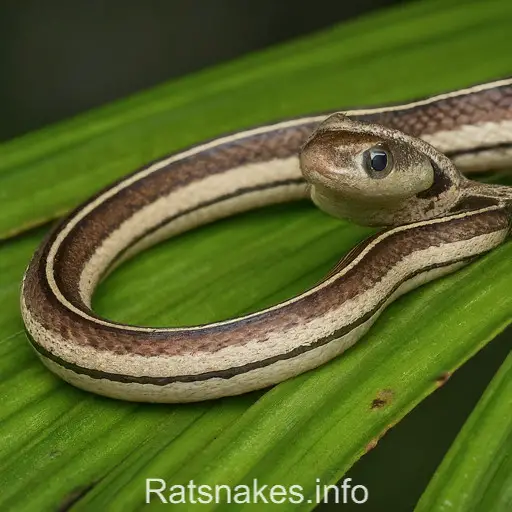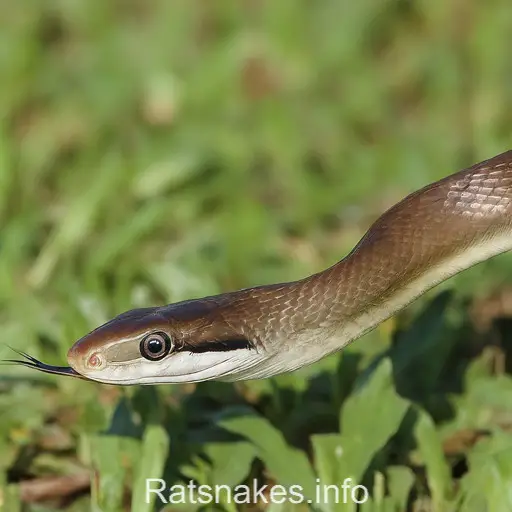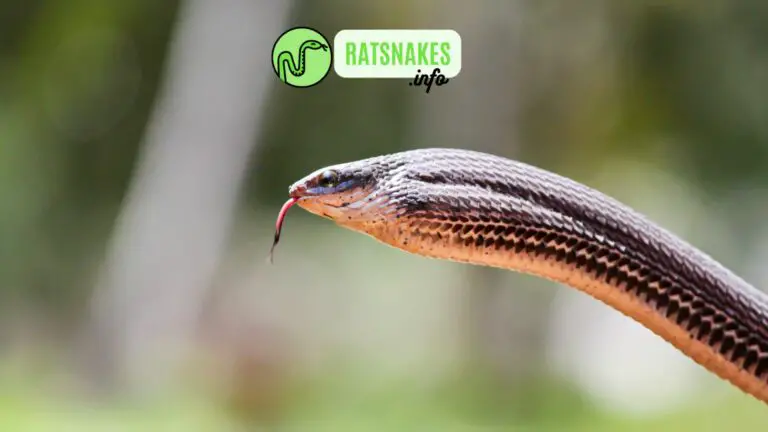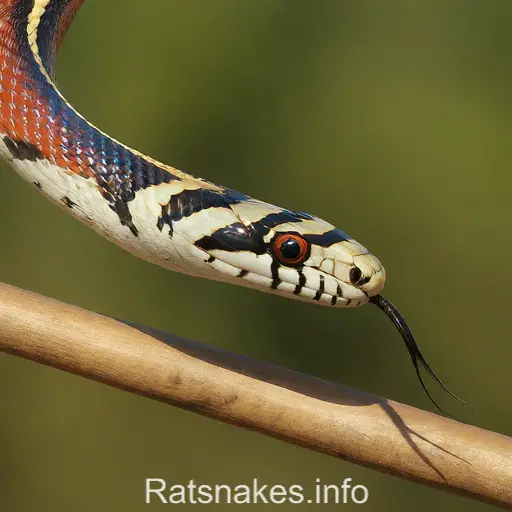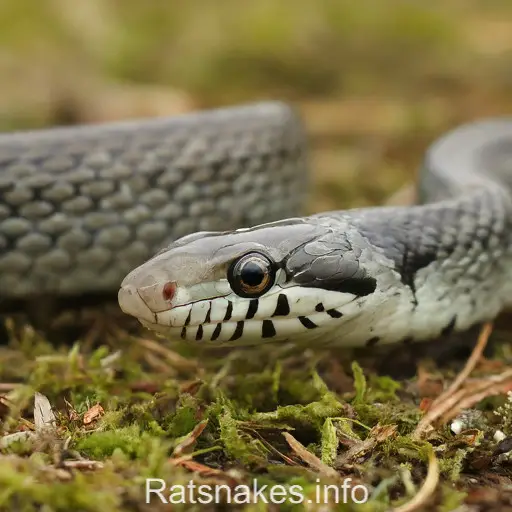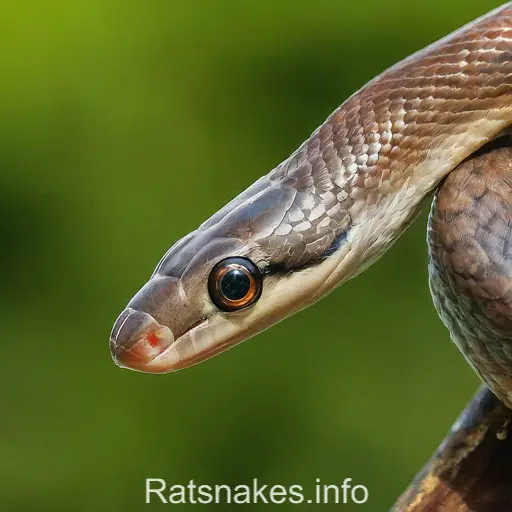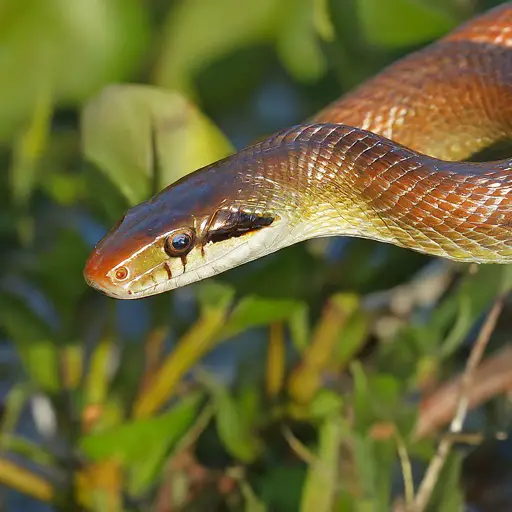
Welcome to our guide on the fascinating Everglades Rat Snake (Pantherophis alleghaniensis rossalleni). Native to the unique ecosystem of the Florida Everglades, this snake species is a sight to behold. With its vibrant colors and distinctive markings, the Everglades Rat Snake is a standout reptile in the region.
As wildlife enthusiasts, we are captivated by the behavior and characteristics of the Everglades Rat Snake. From its hunting techniques to its role in the ecosystem, there is much to uncover about this elusive snake species. Join us as we delve into the world of the Everglades Rat Snake and explore what makes it such a vital part of the Everglades’ biodiversity.
Habitat of the Everglades Rat Snake
The Everglades Rat Snake thrives in a variety of habitats within its range, showcasing its adaptability. Here are some key points about the habitat of these fascinating reptiles:
- Found primarily in the wetlands of the Florida Everglades, including swamps, marshes, and ponds.
- They are highly skilled climbers and can often be spotted in trees near water sources.
- Vegetation such as cypress domes and sawgrass prairies provide ideal cover for these snakes.
- The warm and humid climate of the Everglades contributes to their active behavior throughout the year.
- Biodiversity in this unique environment allows the Everglades Rat Snake to feed on a variety of prey, including rodents and birds.
Observing these snakes in their natural habitat is a rewarding experience for nature enthusiasts. Stay tuned for more insights into the world of the Everglades Rat Snake.
Physical Characteristics
Everglades Rat Snakes, scientifically known as Pantherophis alleghaniensis rossalleni, display unique physical features that set them apart in the wild. Here are some key characteristics:
- Coloration: Their striking appearance boasts a combination of vibrant red, orange, and black blotches which provide excellent camouflage in their natural habitat.
- Size: These non-venomous constrictors typically grow to lengths of 3-5 feet, with females being slightly longer and heavier than males.
- Scales: Smooth scales cover their bodies, aiding in their swift movement through the dense vegetation of the Everglades.
- Eyes: With round pupils and keen eyesight, Everglades Rat Snakes are adept hunters, spotting prey with precision.
- Tongue: Their forked tongues help them detect scents in the air, guiding them to potential food sources.
- Body Structure: Slender in build, these snakes have muscular bodies that allow for quick strikes when hunting.
In addition to these characteristics, the intricate patterns on their scales serve as a testament to the beauty and adaptability of the Everglades Rat Snake.
Hunting Behavior
When it comes to hunting, Everglades Rat Snakes exhibit impressive skills that make them efficient predators in their environment. These snakes are opportunistic feeders, preying on a variety of animals found in the Everglades. With their keen eyesight, they can easily detect movements of potential prey, whether it’s a small rodent scurrying nearby or a bird flying overhead. Their ability to constrict and overpower their prey with speed and precision is a key factor in their hunting success.
One of the remarkable things about the hunting behavior of Everglades Rat Snakes is their adaptability. They can adjust their hunting strategies based on the availability of prey in their surroundings. Whether they are hunting for rodents in the underbrush or birds perched in trees, these snakes demonstrate versatility in their hunting techniques. Additionally, their forked tongues play a crucial role in sensing chemical cues in the air, helping them track down potential meals in their environment.
In the Everglades ecosystem, where food sources can vary, Everglades Rat Snakes have evolved to be efficient and strategic hunters. Their ability to camouflage effortlessly in their surroundings, combined with their agility and speed, makes them well-adapted predators. By observing their hunting behavior in the wild, we gain valuable insights into the remarkable survival skills of these fascinating reptiles.
Role in the Ecosystem
Everglades Rat Snakes play a vital role in the ecosystem of the Florida Everglades. As keen predators, they help control the population of rodents and birds, contributing to the overall balance of the food chain. By keeping these populations in check, they prevent overgrazing of vegetation and support the biodiversity of the region.
Their ability to blend in with their surroundings and move swiftly allows them to hunt efficiently and maintain a healthy ecosystem. By preying on smaller animals, Everglades Rat Snakes help regulate the population of species further down the food chain, creating a ripple effect that benefits the entire ecosystem.
Moreover, these snakes serve as indicators of environmental health. Their presence and behavior reflect the overall well-being of the Everglades ecosystem. Studying their population trends and interactions with other species can provide valuable insights into the ecosystem’s dynamics and any potential environmental changes.
In essence, the Everglades Rat Snake is not just a visually striking species but a keystone predator that plays a crucial role in maintaining the delicate balance of the Florida Everglades ecosystem.
Conservation Efforts
When it comes to Conservation Efforts for the Everglades Rat Snake, there are crucial steps being taken to protect this unique species and its habitat. Here are some key points regarding the conservation of the Everglades Rat Snake:
- Habitat Preservation: Preserving the diverse habitats where Everglades Rat Snakes thrive is essential. This includes protecting wetlands, swamps, marshes, and other natural areas where these snakes are commonly found.
- Mitigating Human Impact: Efforts are being made to minimize human impact on the Everglades ecosystem to ensure the survival of the Rat Snake. This includes initiatives to reduce pollution, habitat destruction, and other human activities that can harm the snake’s habitat.
- Research and Monitoring: Continuous research and monitoring are vital for understanding the population dynamics, behavior, and threats faced by Everglades Rat Snakes. By studying these snakes closely, conservationists can implement targeted conservation strategies.
- Education and Awareness: Raising awareness about the importance of the Everglades Rat Snake in the ecosystem is crucial. Educating the public about this species and its role in maintaining biodiversity can lead to greater support for conservation efforts.
- Collaboration: Collaborative efforts between government agencies, conservation organizations, researchers, and the local community play a significant role in the conservation of the Everglades Rat Snake. By working together, we can achieve more effective conservation outcomes.
- Legal Protection: Providing legal protection for the Everglades Rat Snake through policies and regulations helps safeguard the species from threats such as habitat destruction, poaching, and illegal trade.
By implementing these conservation efforts and engaging in ongoing research and monitoring, we can ensure the long-term survival of the Everglades Rat Snake and contribute to the conservation of the unique ecosystem of the Florida Everglades.
Key Takeaways
- Habitat: Everglades Rat Snakes thrive in diverse habitats within the Florida Everglades, including wetlands and vegetation-rich areas.
- Everglades Rat Snakes thrive in diverse habitats within the Florida Everglades, including wetlands and vegetation-rich areas.
- Physical Characteristics: These non-venomous constrictors are known for their vibrant coloration, smooth scales, and keen hunting traits.
- These non-venomous constrictors are known for their vibrant coloration, smooth scales, and keen hunting traits.
- Hunting Behavior: Everglades Rat Snakes exhibit adaptability and agility in their hunting strategies, preying on rodents and birds.
- Everglades Rat Snakes exhibit adaptability and agility in their hunting strategies, preying on rodents and birds.
- Role in the Ecosystem: As keystone predators, they help maintain the ecosystem balance by controlling rodent and bird populations.
- As keystone predators, they help maintain the ecosystem balance by controlling rodent and bird populations.
- Conservation Efforts: Protecting their habitats, mitigating human impact, research, education, and collaboration are crucial for ensuring the survival of the Everglades Rat Snake.
- Protecting their habitats, mitigating human impact, research, education, and collaboration are crucial for ensuring the survival of the Everglades Rat Snake.
Conclusion
Preserving the Everglades Rat Snake’s habitats, minimizing human impact, conducting research, raising awareness, fostering collaboration, and providing legal protection are crucial steps in ensuring the species’ survival. By working together, we can safeguard this magnificent snake and contribute to the conservation of the unique Florida Everglades ecosystem. Let’s continue our efforts to protect and cherish these vibrant creatures and the diverse environment they call home.

